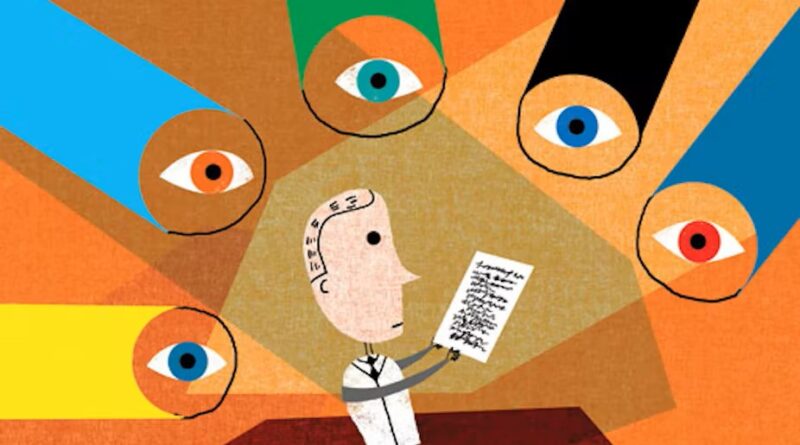Higher Novelty, Longer Handling Process? Evidence from 700,000 Publications
Higher Novelty, Longer Handling Process? Evidence from 700,000 Publications
Zhentao Liang, Jin Mao, and Gang Li
Center for Studies of Information Resources, Wuhan University, Wuhan 430072, China
School of Information Management, Wuhan University, Wuhan 430072, China
Innovation is essential to drive the advances of human society, but novel ideas may not be as welcome as expected when they are first introduced. For example, it took over a hundred years for Copernicus’s heliocentric model to replace Geocentrism which places the Earth at the center. While not all scientific findings are Copernican revolutions, understanding the bias against novelty is crucial for relevant sectors to make proper decisions to facilitate innovations.
In the field of Scientometrics (or Science of Science), whether novel ideas experience more difficulties in dissemination and adoption is of particular interest. Evidence has been found that highly novel papers and grant proposals often suffer from stricter scrutiny and are more likely to be negatively evaluated. For instance, a study by Wang et al. (2017) found the journal impact factor of novel papers was substantially lower than their non-novel counterparts. However, previous works mainly focus on the post-publication characteristics of novel research, such as the volume and speed of citations received. To the best of our knowledge, there is still a lack of large-scale quantitative studies on the bias against novel manuscripts before publication.
—Do novel manuscripts take longer to get accepted than manuscripts that are less novel?—
In our recent study (Liang et al., 2022), we provide large-scale quantitative evidence on the novelty bias in the pre-publication process. Specifically, we focus on the delayed recognition of novel manuscripts, which is investigated through the total handling time (from submission to acceptance). Also investigated are the moderating effects of the journal, author, and affiliation prestige.
 Based on over 700,000 PubMed articles published in 2001-2014, we constructed the citation network and measured novelty as the extent to which a manuscript disrupts existing knowledge. We found a positive relationship between manuscript novelty and handling time. This relationship remains significant after controlling other confounding variables. As manuscript novelty increases from -0.1 to 0.1, the predicted handling time increases from 100 to 137 days. It may put novel manuscripts in a disadvantageous position in the competition for readers’ attention.
Based on over 700,000 PubMed articles published in 2001-2014, we constructed the citation network and measured novelty as the extent to which a manuscript disrupts existing knowledge. We found a positive relationship between manuscript novelty and handling time. This relationship remains significant after controlling other confounding variables. As manuscript novelty increases from -0.1 to 0.1, the predicted handling time increases from 100 to 137 days. It may put novel manuscripts in a disadvantageous position in the competition for readers’ attention.
Our results also showed that prestigious authors have an advantage in shortening the handling time of their submissions. However, as the manuscript novelty increases, the advantage of prestigious authors is diminished. This is reasonable. In the case of less novel submissions, authors’ claims tend to consolidate rather than disrupt previous knowledge. Therefore, authors’ prestige can serve as a relatively “safe” instrument for reviewers to speed up their work and more prestigious authors gain favorable treatment. In the case of high-novelty submissions, reviewers are more careful about the claims because they challenge existing perceptions. Author prestige is a less “safe” instrument and reviewers must pay more attention to the content. We interpret the diminished gap as the result of the weakened advantageous effect of author prestige, instead of discrimination against prestigious authors when they submit novel manuscripts.
A similar pattern is also observed in the moderating effect of affiliation prestige. Regarding journal prestige, journals with a higher impact factor have a slower editorial process in general. In the case of novel manuscripts, the gap between high and low-impact journals enlarges. Note that only accepted manuscripts are included in our sample, while top journals may implement a quick rejection policy as a response to excessive submissions.
Finally, we investigated the relationship between manuscript novelty and citations. We found a U-shape relationship between manuscript novelty and the citations received within 3 and 5 years after publication, but the relationship between novelty and 1-year citations seems just negative. This is consistent with the findings in previous studies.
The original article on which this essay is based is:
Liang, Z., Mao, J., Li, G. (2022). Bias against scientific novelty: A pre-publication perspective. Journal of the Association for Information Science and Technology.
References
Lee, C. J., Sugimoto, C. R., Zhang, G., & Cronin, B. (2013). Bias in peer review. Journal of the American Society for Information Science and Technology, 64(1), 2-17.
Sun, M., Barry Danfa, J., & Teplitskiy, M. (2022). Does double-blind peer review reduce bias? Evidence from a top computer science conference. Journal of the Association for Information Science and Technology, 73(6), 811-819.
Teplitskiy, M., Peng, H., Blasco, A., & Lakhani, K. R. (2022). Is novel research worth doing? Evidence from peer review at 49 journals. Proceedings of the National Academy of Sciences, 119(47), e2118046119.
Wang, J., Veugelers, R., & Stephan, P. (2017). Bias against novelty in science: A cautionary tale for users of bibliometric indicators. Research Policy, 46(8), 1416-1436.
Cite this article in APA as: Li, G., Liang, Z., & Mao, J. (2022, December 1). Higher novelty, longer handling process? Evidence from 700,000 publications. Information Matters, Vol. 2, Issue 11. https://informationmatters.org/2022/12/higher-novelty-longer-handling-process-evidence-from-700000-publications/
Author
-
Zhentao Liang is a Ph.D. candidate in Information Science at the School of Information, Wuhan University, advised by Prof. Gang Li. He is currently a visiting researcher at the Centre for Science and Technology Studies (CWTS) of Leiden University, working on fine-grained research linkage identification with Dr. Nees Jan van Eck. His research interests widely include cross-disciplinary knowledge diffusion analysis, emerging topic identification, and full-text scientific document analysis.
View all posts





